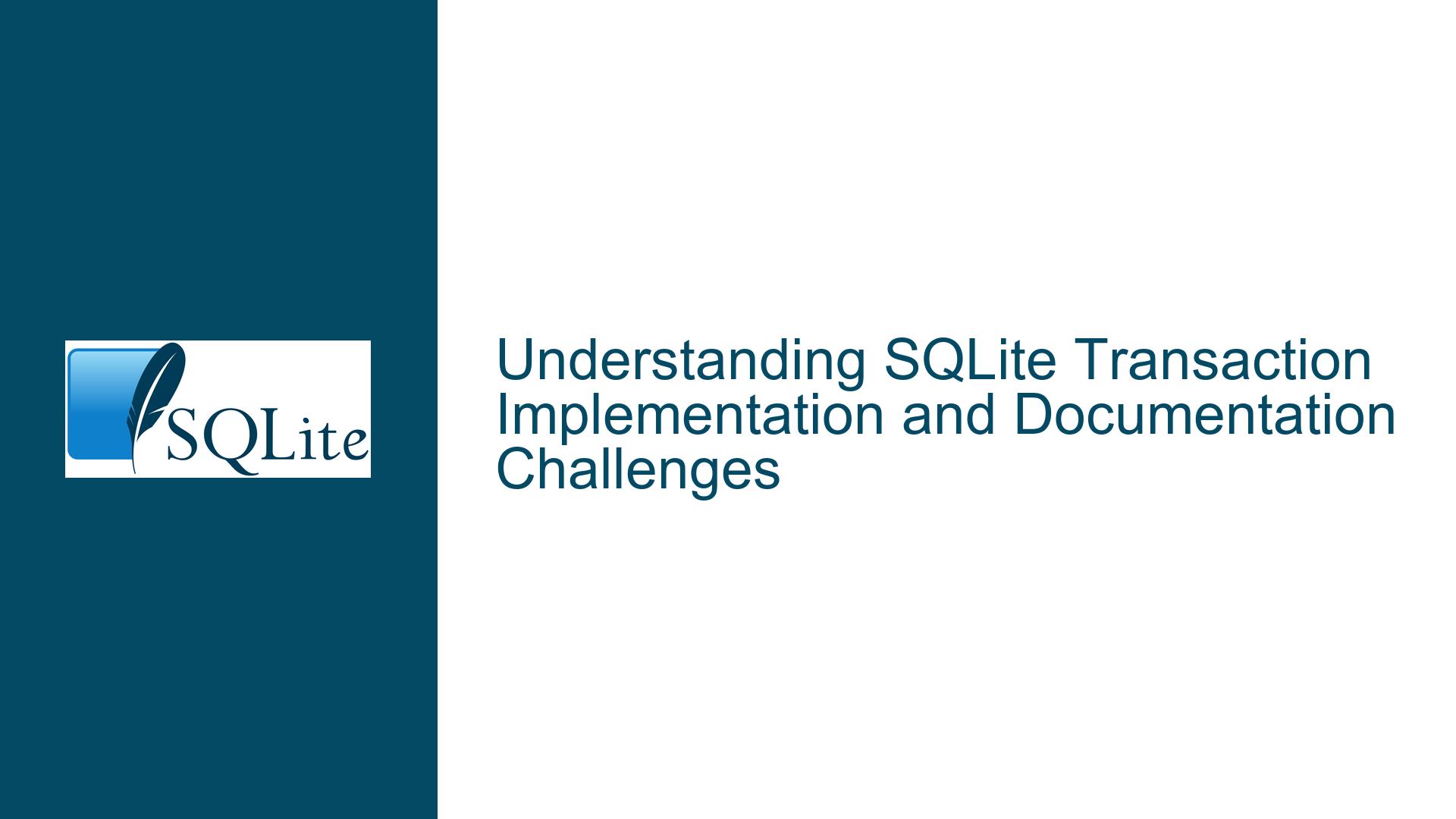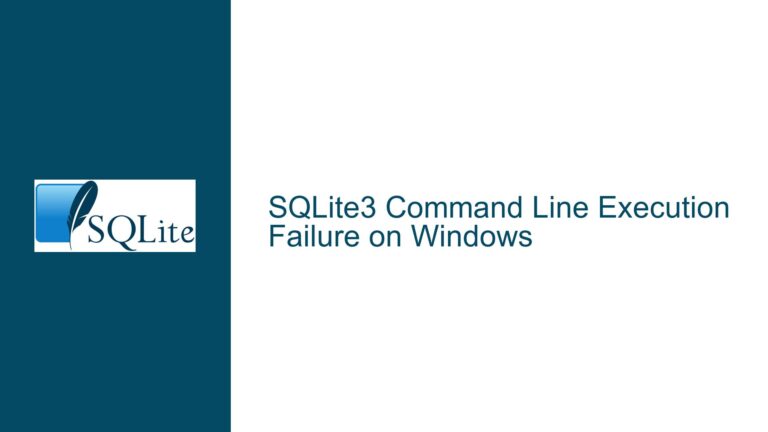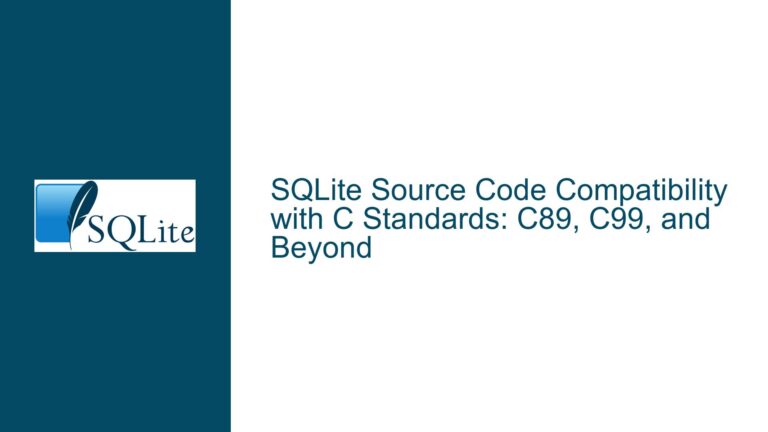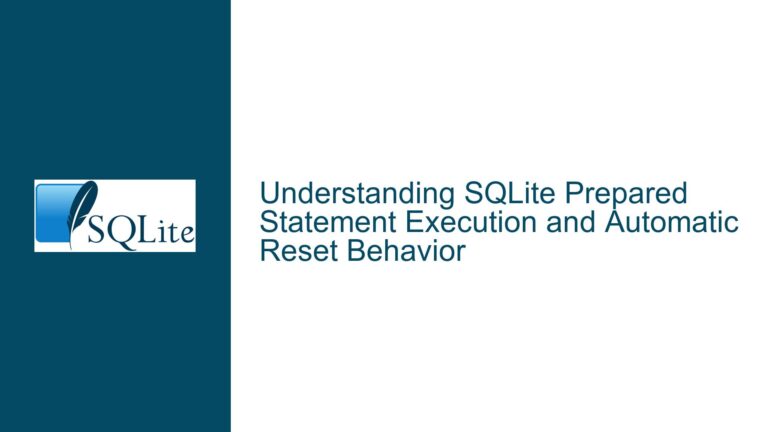SQLite Transaction Implementation and Documentation Challenges
SQLite Transaction Implementation and the Need for High-Level Explanations
SQLite, as an embedded database, handles transactions differently compared to traditional server-based databases. Transactions in SQLite are crucial for ensuring data integrity, especially in environments where multiple processes or threads might access the database concurrently. The core of SQLite’s transaction management revolves around its locking mechanism, journaling, and the way it handles isolation levels. However, understanding these mechanisms at a high level can be challenging, especially for developers who are accustomed to server-based databases like MySQL or PostgreSQL.
In server-based databases, transactions are typically managed by a central server process that controls all client connections. This centralization allows the server to enforce isolation levels and manage locks effectively. SQLite, on the other hand, operates as an embedded database, meaning it runs within the application process itself. This difference in architecture leads to unique challenges and implementation details that are not immediately obvious to developers who are new to SQLite.
One of the key aspects of SQLite’s transaction implementation is its use of file-level locking. SQLite employs a sophisticated locking mechanism to ensure that only one process can write to the database at a time, while allowing multiple readers. This is achieved through a combination of shared and exclusive locks, which are managed at the file system level. The locking mechanism is described in detail in the SQLite documentation, particularly in the "Locking in SQLite" section. However, the documentation, while thorough, can be dense and difficult to parse for those who are not already familiar with the concepts.
Another critical component of SQLite’s transaction management is its journaling system. SQLite uses a write-ahead log (WAL) or a rollback journal to ensure that changes to the database can be rolled back in case of a failure. The WAL mode, in particular, offers significant performance benefits by allowing readers to continue accessing the database while a write operation is in progress. However, understanding how these journaling modes work and when to use them requires a deeper dive into the internals of SQLite.
Given the complexity of these mechanisms, there is a clear need for high-level explanations that can bridge the gap between the detailed technical documentation and the practical knowledge required by developers. While the SQLite documentation is comprehensive, it often assumes a certain level of familiarity with database internals. This can make it difficult for developers to quickly grasp the key concepts and apply them in their projects.
The Challenges of Documenting SQLite’s Transaction Implementation
Documenting the intricacies of SQLite’s transaction implementation presents several challenges. One of the primary challenges is the dynamic nature of the codebase. SQLite is under active development, and its internal implementation details can change from one version to the next. This makes it difficult to create static documentation, such as videos or books, that accurately reflect the current state of the code. Any such documentation would need to be updated frequently to remain relevant, which can be a time-consuming process.
Another challenge is the level of detail required to accurately describe SQLite’s transaction mechanisms. The codebase is highly optimized and includes numerous edge cases and optimizations that are not immediately obvious. For example, the way SQLite handles lock escalation or the specific conditions under which it switches from a shared lock to an exclusive lock are complex topics that require a deep understanding of the code. Documenting these details in a way that is both accurate and accessible to a broad audience is a non-trivial task.
Furthermore, the audience for such documentation is diverse, ranging from novice developers who are just starting with SQLite to experienced database engineers who are looking to optimize their applications. Catering to such a wide range of expertise levels is challenging, as the documentation must strike a balance between providing enough detail to be useful to experts while remaining accessible to beginners.
The use of video as a medium for documentation introduces additional challenges. Producing high-quality technical videos requires significant time and resources. The process typically involves writing a script, setting up a recording environment, and editing the final product. For a topic as complex as SQLite’s transaction implementation, the script alone could take several hours to write, as it would need to cover a wide range of topics in a coherent and logical manner. Additionally, any changes to the codebase would require the video to be re-recorded or updated, further increasing the time and effort required.
Strategies for Understanding and Documenting SQLite Transactions
Given the challenges associated with documenting SQLite’s transaction implementation, there are several strategies that developers can employ to gain a better understanding of the topic. One approach is to start with the existing documentation and gradually delve deeper into the codebase. The SQLite website provides a wealth of information, including detailed explanations of the locking mechanism, journaling modes, and transaction isolation levels. By carefully reading through this documentation and experimenting with the concepts in a controlled environment, developers can build a solid foundation of knowledge.
Another strategy is to leverage the SQLite source code itself. The code is well-commented and provides a wealth of information about the internal workings of the database. By reading through the code and tracing the execution of key functions, developers can gain a deeper understanding of how transactions are implemented. This approach requires a certain level of programming expertise, but it can be highly rewarding for those who are willing to invest the time.
For those who prefer a more guided approach, there are several third-party resources available that provide high-level explanations of SQLite’s transaction mechanisms. These resources, which include blog posts, tutorials, and online courses, can serve as a useful complement to the official documentation. While they may not cover every detail of the implementation, they can help developers quickly grasp the key concepts and apply them in their projects.
In terms of documentation, one potential solution is to create a living document that is updated in tandem with the codebase. This could take the form of a wiki or a collaborative document that is maintained by the SQLite development team and the broader community. By keeping the documentation closely tied to the code, it would be easier to ensure that it remains accurate and up-to-date. Additionally, this approach would allow for incremental updates, reducing the burden on individual contributors.
Another approach is to focus on documenting the public API and high-level concepts, rather than delving into the internal implementation details. This would make the documentation more accessible to a broader audience while reducing the maintenance burden. For those who need to understand the internals, the source code and comments would remain the primary resource.
Finally, it is worth considering the use of automated tools to generate documentation from the codebase. Tools like Doxygen can extract comments and generate documentation in various formats, including HTML and PDF. While this approach may not be suitable for all types of documentation, it can be a useful way to ensure that the documentation remains in sync with the code.
In conclusion, understanding and documenting SQLite’s transaction implementation is a complex but rewarding endeavor. By leveraging the existing documentation, exploring the source code, and employing a variety of documentation strategies, developers can gain a deeper understanding of how SQLite handles transactions and apply this knowledge to their projects. While the challenges are significant, the benefits of having a well-documented and well-understood codebase are well worth the effort.






